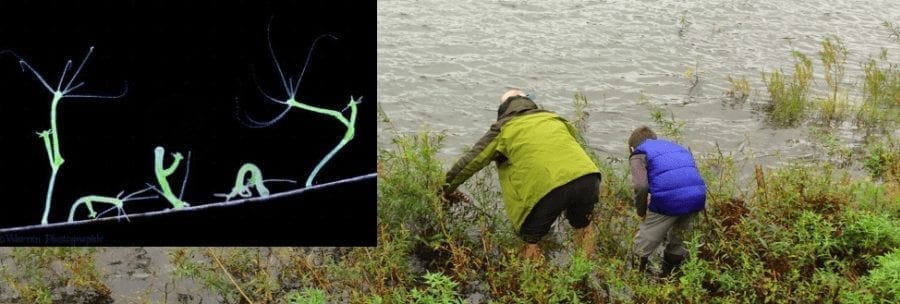Hydra Investigations
Students hike to nearby ponds, collect hydra and then watch through a microscope to see the animals glide and somersault as they search for and consume their prey.
The tiny Cnidarians known as hydra are thought to have the simplest and oldest nervous system on Earth, yet they can perform remarkably complicated behaviors like somersaulting. These small freshwater invertebrates are found attached to submerged weeds, sticks and dead leaves.
Observing hydra is a great way to learn about neuroscience. The entire nervous system of these tiny translucent animals has been mapped by neuroscientists, enabling them to learn about how such simple animals control their behavior. View a presentation prepared by Dr. Rafael Yuste and his colleagues from the Neurotechnology Center at Columbia University to learn about how these invertebrates process information as they grow, move, hunt, feed and reproduce.
The Simplest Brain on the Planet: Neuroscience & Behavior of Hydra

Presentation given to students ages 9 and up at Black Rock Forest on October 3, 2015. (Presenters: Dr. Rafael Yuste, Shuting Han, Christophe Dupre and Yuriy Shymkiv, Columbia University). In order to reduce the size of the presentation, the videos have been removed. Please use video links in Related Documents section.

